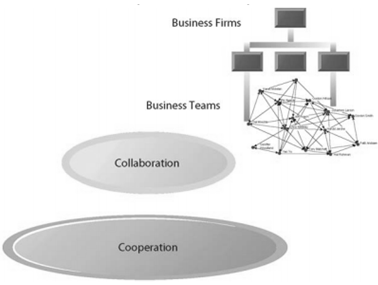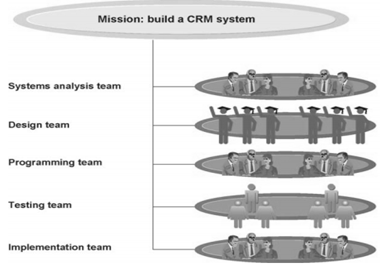Bonanza Offer FLAT 20% off & $20 sign up bonus Order Now
In this collaborative world, team performance is very crucial to retail competitive advantages in this global market (Ward and Peppard 2016). In order to improve the performance of the team, collaborative technologies such as information system is very effective.
In this assignment, benefits of teamwork and collaboration are evaluated from organizational perspectives. In addition, the effectiveness of IT system on team performance is also measured in the following section by considering various organizational factors.
Changing nature of the workplace is forcing to adopt teamwork. From factory manufacturing to IT industries, works are divided into silos which need coordination and collaboration to complete the work within budget and timeline successfully. Then, in the last 50 years, the professional workplace has changed a lot (Cheng et al. 2014). Each of the jobs needs the expertise to solve the problems by taking opinions of each team member so that jobs can be successfully accomplished.

Figure 1: Team Collaboration Framework
(Source: Dennis, Minas and Bhagwatwar 2013, pp-200)
The major benefits gained from team collaboration are summarized as follows
Productivity: Teamwork can complete work faster than people working in isolated form.
Quality: Collaborative working of employee take corrective actions by analyzing the problems properly, which can mitigate communication errors and time delays in productions of the organization (Baskerville and Wood-Harper 2016).
Innovation: In a team, people come from different academic qualification and have their expertise. Different ideas and perceptions of people help to make innovative products which can enhance the service quality of the organization to a larger extent.
Customer Service: Customers’ queries can be optimized quickly by greater collaboration and coordination amongst team members (Hansen 2013). In this way, customers’ demands can also be fulfilled successfully.
Financial Performance: All the above mentioned benefits help the organization to speed up their business operations with enhanced quality of services which fosters the growth of financial performance by earning greater revenue annually.

Figure 2: Model of Collaboration
(Source: Angelo and McCarthy 2014, pp-15)
In order to be a good team member or collaborator, one should possess the following characteristics
Adaptable: Person should have the ability to learn, should work with other persons and should have the capability to mitigate problems with best possible solutions.
Committed: Being a good team member or collaborator, an individual should be enthusiastic and should have a strong belief in the team and their success.
Communicative: The communication skills should be very good to present own opinions and views in front of others (Ku, Tseng and Akarasriworn 2013). A good team member should be truthful to their team and the organization. Moreover, the team member should be empathic to understand others' needs and should give respect to that.
Competent: Competitive nature of a person makes the ability to complete the task within the deadline and with consistent performance.
Disciplined: A well-disciplined person not only contributes to making best organizational performance and but also help to develop own personalities (Binder 2016). In addition, the well disciplined person hit targets and schedules to meet organizational demands perfectly.
Mission Conscious: Good team member should always concentrate to meet organizational mission and vision by making dreams into realities. The person should always be able to put new ideas which can provide innovative services to the organization.
Solutions Orientation: Person should respond to the problems fast and should have the capability to solve the problems with best alternative solutions (Taras et al. 2013).
Trustworthy: A good team member should be one to whom organization can rely blindly on upon. Whenever the team members can trust each other and give value to others' opinions; the best output can be obtained.
Enhanced capabilities of a team can transform actions into fruitful results. In addition, a higher collaboration between team members can leverage knowledge by developing buffering capabilities, sense making, and processing. These capabilities are crucial to addressing the problems related knowledge gathering (Stair and Reynolds 2013). The processing ability handle a large array of data and information whereas sense making capabilities help to understand inconsistent and incomplete information. Finally, the buffering capabilities help to deal with competing perspectives to channelize different ideas of multiple stakeholders.
The managers should take the responsibilities to make an effective team with skilled and disciplined personalities. In order to manage a large team, collaborative and effective team six major four should be followed which are described in the following section
Identify the Organizational Mission: Every organization has the mission to increase their sales and expands their market by achieving higher customer satisfaction. In order to achieve this large objective, smaller teams should be made by taking skilled personalities. In the next stage, all the activities of these smaller teams should be coordinated and integrated to achieve the mission successfully (Melo et al. 2013). Suppose an organization wants to deploy customer management system, so five teams are needed which are system analyst team, design team, programming team, testing team and implementation team. After final implementation of the system, the organization requires competent people to build customized applications of the implemented system.

Figure 3: Making and Managing Good Team
(Source: Dennis, Minas and Bhagwatwar 2013, pp-215)
Identify the Skills: after the identification of organizational objectives and teams, proper skills should find out. Each team has different requirements. System analysis and implementation team contact directly with the users and business partners, so communication skills should be of high quality (Baskerville and Wood-Harper 2016). Programming, designing and testing team should have perfect technical skills so that each component of the proposed system can be handled perfectly and operations will run smoothly.
Identify People: In order to make an efficient team, diversity of talents is much needed. By analyzing the past working experience of the employees or by taking recommendations from other senior authorities, managers must choose right kinds of people who can have both technical skills as well as managerial expertise (Angelo and McCarthy 2014). A team leader can be hired who can choose members of their choice based on quality and experience.
Oversight: at the final stage it is the sole responsibility of the manager to monitor whether the team members are able to meet organizational mission in within fixed time and budget or not. Inductive meetings should be done on a regular basis to identify blockages, to find out best possible solutions and to review the overall progress of the organization (Ku, Tseng and Akarasriworn 2013). Performance appraisal activities such as incentives should be offered to the employees so that people will always be encouraged to give best efforts for the well fare of the organization.
In order to build a collaborative team, two more components are needed; one is supportive organizational culture and effective information system to enable collaboration and teamwork.
If the organization does not hold any supportive culture, a collaboration between team members will not work. If employees become afraid of putting their views and opinions, there will be no cooperation amongst the employees. Therefore, collaborative business culture is very crucial to maintain a healthy relationship between the superiors and subordinates of the organization (Ward and Peppard 2016). Senior managers have the responsibility to achieve results successfully, but they have to rely on their teammates to implement those results for organizational benefits. Therefore, the collaborative organizational culture can enhance the decision making the power of the team to create, devise and build innovative products and services.
Implementation of an effective information system plays a significant role to encourage the collaboration between team members, managers and senior authorities of the organization. In this growing technical era, the internet helps to transform the entire business operation online and make greater collaboration amongst the fellow employees. There are varieties of collaborative software tools such as groupware, event scheduling, collaborative reviewing, video conferencing, web presenting and my others which have the capabilities to share calendars, database access, and other activities for organizational context (Stair and Reynolds 2013). By the utilization of advanced collaborative tools, it becomes easier to provide a single workspace for the team members to organize all the necessary documents, to coordinate schedules and to participate in every discussion actively.
Conclusively it can be stated that collaborative tools and technologies have significant positive impacts on the improved team performance. Besides the adoption of collaborative tools or implementation of the information system, it is very necessary for the organization to create and foster a supportive culture inside working environment. Supportive nature of the team members helps to enhance organizational productivity with significant economic growth. However, in order to be a good collaborator or team member, each people should have posses certain qualities such as well disciplined, adaptive, communicative and competent which help to develop their personalities as well. This changing culture may create potential challenges for the organization but can also offer opportunities for future growth and benefits.
Angelo, R. and McCarthy, R., 2014. A PEDAGOGICAL TOOL FOR THE DEVELOPMENT OF INFORMATION SYSTEMS PROJECT TEAM COLLABORATION SKILLS. Issues in Information Systems, 15(1).
Baskerville, R.L. and Wood-Harper, A.T., 2016. A critical perspective on action research as a method for information systems research. In Enacting Research Methods in Information Systems: Volume 2 (pp. 169-190). Springer International Publishing.
Binder, J., 2016. Global project management: communication, collaboration, and management across borders. CRC Press.
Cheng, X., Li, Y., Sun, J. and Zhu, X., 2014, January. Easy collaboration process supports system design for student collaborative group work: a case study. In 2014 47th Hawaii International Conference on System Sciences(pp. 453-462). IEEE.
Dennis, A.R., Minas, R.K. and Bhagwatwar, A.P., 2013. Sparking creativity: improving electronic brainstorming with individual cognitive priming. Journal of Management Information Systems, 29(4), pp.195-216.
Hansen, M., 2013. Collaboration: How leaders avoid the traps, build common ground, and reap big results. Harvard Business Press.
Ku, H.Y., Tseng, H.W. and Akarasriworn, C., 2013. Collaboration factors, teamwork satisfaction, and student attitudes toward online collaborative learning. Computers in Human Behavior, 29(3), pp.922-929.
Melo, C.D.O., Cruzes, D.S., Kon, F. and Conradi, R., 2013. Interpretative case studies on agile team productivity and management. Information and Software Technology, 55(2), pp.412-427.
Schwalbe, K., 2015. Information technology project management. Cengage Learning.
Stair, R. and Reynolds, G., 2013. Principles of information systems. Cengage Learning.
Taras, V., Caprar, D.V., Rottig, D., Sarala, R.M., Zakaria, N., Zhao, F., Jiménez, A., Wankel, C., Lei, W.S., Minor, M.S. and Bry?a, P., 2013. A global classroom? Evaluating the effectiveness of global virtual collaboration as a teaching tool in management education. Academy of Management Learning & Education, 12(3), pp.414-435.
Ward, J. and Peppard, J., 2016. The Strategic Management of Information Systems: Building a Digital Strategy. John Wiley & Sons.
Upload your Assignment and improve Your Grade
Boost Grades